闽方言是我国七大方言区之一。闽南语区主要包括我国福建南部、广东东部和台湾地区。(The Min dialect is one of the seven major Chinese dialects, which is mainly spoken in southern Fujian, eastern Guangdong and Taiwan.) 以闽南语为母语者在菲律宾、新加坡、马来西亚、印尼等东南亚国家的华人间也较为集中。(A lot of native speakers of it can also be found in the Chinese communities in the Philippines, Singapore, Malaysia, Indonesia and other Southeast Asian countries.)
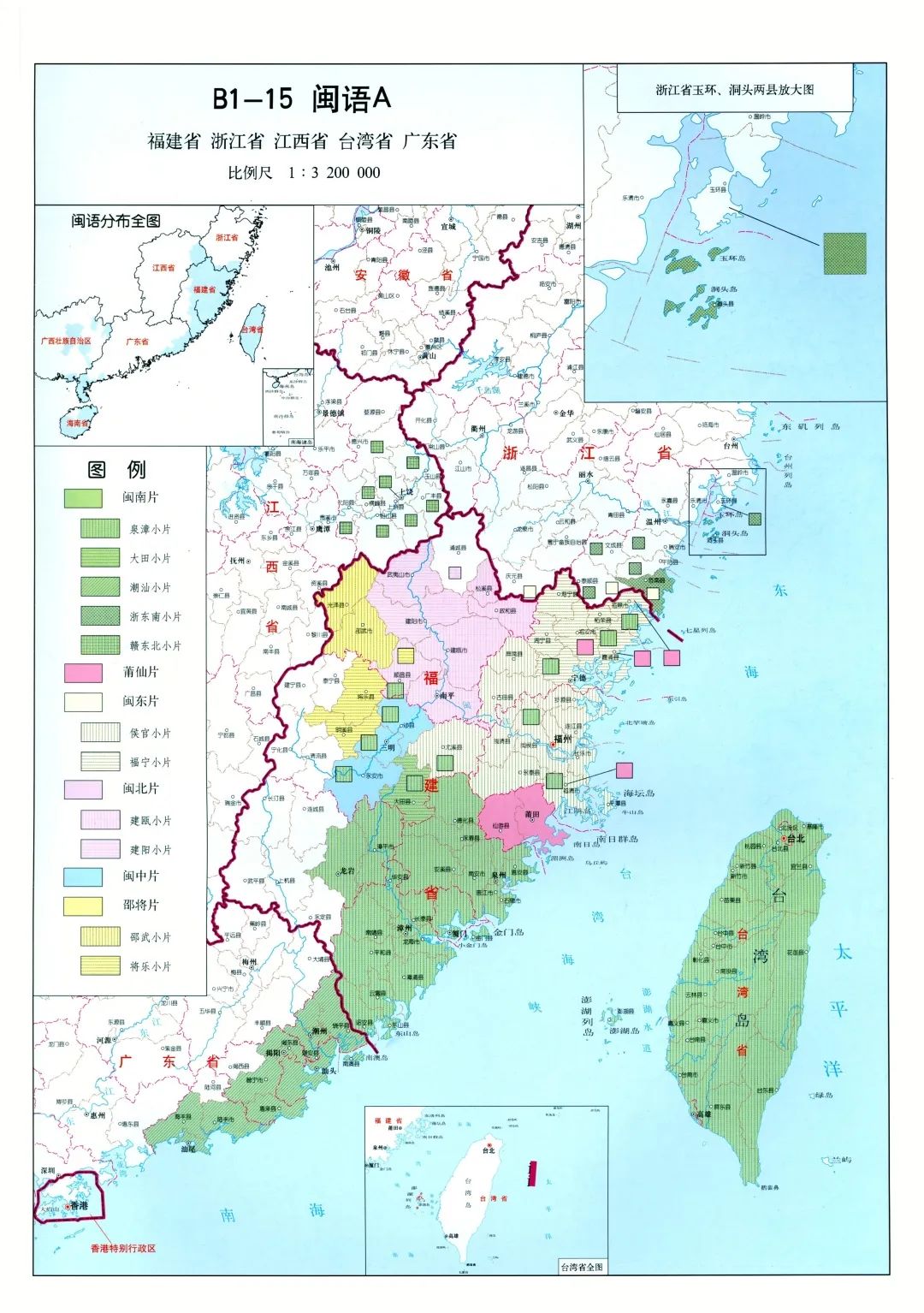
闽语分布图
摘自《中国语言地图集第二版汉语方言卷》
脍炙人口的闽南语流行歌曲《爱拼才会赢》中唱到:“三分天注定,七分靠打拼,爱拼才会赢。”让人们感受到了闽南人民刻在骨子里的对生活无限的热爱。闽南地区极具地域特色的传统建筑——闽南古厝,更是闽南人民热爱生活的历史印记。(Minnan Gucuo (literally "a historic residential complex in southern Fujian province"), a traditional architecture with distinctive regional characteristics, conveys vividly the local people’s love for life.)
缘起
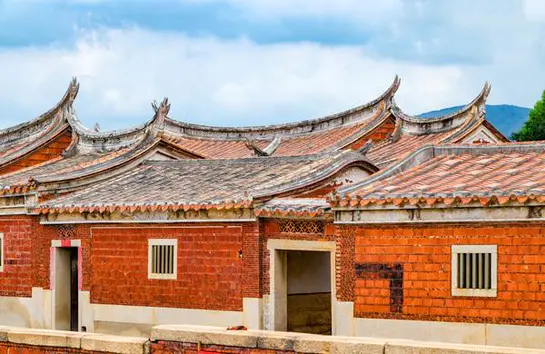
“红砖白石双坡曲,出砖入石燕尾脊”。("Red brick walls, embedded with white stones; canopied by two cocked dovetail ridges.") 很好地概括了闽南古厝的特点:形似殿宇,富丽堂皇,前埕后厝,坐北朝南,白石墙体,三或五开间加双护厝,硬山式屋顶和双翘燕尾脊,而最具代表性的“红砖”让闽南古厝有了“红砖厝”的别称。(Red bricks, the main building material, give the residences a nickname "red-brick residences") 仿“皇宫式”的建筑风格源始于唐昭宗光化年间,砖石混砌和墙面上多样的装饰及鲜亮的色彩纹样在中国建筑史上有它独特之处,因而有学者认为这个区域的民居是属于“红砖文化区”。闽南的红砖墙也体现了兼容、开拓的闽南风格。(The red-brick walls also reflect the inclusive and pioneering spirit of the local people. )

在内部布局上,闽南古厝有“光厅暗屋”的特点。(In terms of the internal layout, the residences feature "bright halls and dark rooms".) 中间厅堂宽敞明亮。厅堂两侧为东西大房,是主要居室。大房房门悬布帘,以屋顶小窗取光,室内较暗。这种“一明两暗”的三开间结构,是闽南古厝最基本的构成单位。古厝就是“一明两暗”布局基础上,由数个单体建筑及外部空间组合衍化而成的合院建筑。(This "one bright hall + two dark rooms" layout is the most fundamental unit, based on which, several units join together to make one residential complex.) 同时,在古厝的四周和内部,通常有较完善的排水系统。一旦下大雨,内外共同协作,便不会出现水涝的问题。这种功能又使古厝具备了真正意义上的冬暖夏凉的功能。
闽南人家早在百年前实现了居住、家族教育、宗庙祠堂三位一体的生活布局,以深远的睿智思考着如何繁衍家族,和谐共存。(Since as early as a hundred years ago, people in Southern Fujian province, aiming to continue the family line in harmony, have devised the living style which combines dwelling, family education and ancestor worship together in one residential complex.)
传说——“臭头皇后“
相传唐昭宗光化年间,惠安县黄田人、工部侍郎黄纳裕的侄女黄小厥,入宫被选立为王妃。黄小厥小时候头上曾长过一层蚝壳般的癞疮,所以后人戏称她为“臭头皇后”(乡间人把王侯的配偶称作“皇后”)。这位“臭头皇后”一心挂念家乡民间疾苦。
一年春天,福州连续下了几天的倾盆大雨。黄皇后在宫中焦虑不安,因为每年的这个季节,离福州不远的闽南地区也正值雨季。她深知家乡的父老乡亲身居茅屋,地处滨海,遇到大雨加上大风,经常是茅飞屋塌、苦不堪言,因而很是忧伤。闽王瞧在眼里,忙问何故。黄皇后便将情况如实道来。闽王便赐其府上建造皇宫式房屋。
黄皇后听罢,眼睛一亮,立即跪下谢恩。而在对传旨太监时,皇后将闽王所指的“你府”(单指皇后的家)混淆含义,改为“我府”让太监误以为是指整个泉州府,以造福家乡。于是整个泉州府,特别是达官、豪绅、富商和华侨,甚至普通百姓人家,纷纷仿效王府的样子建起了布局合理、雍容稳实的房子,便是流传至今的闽南古厝。
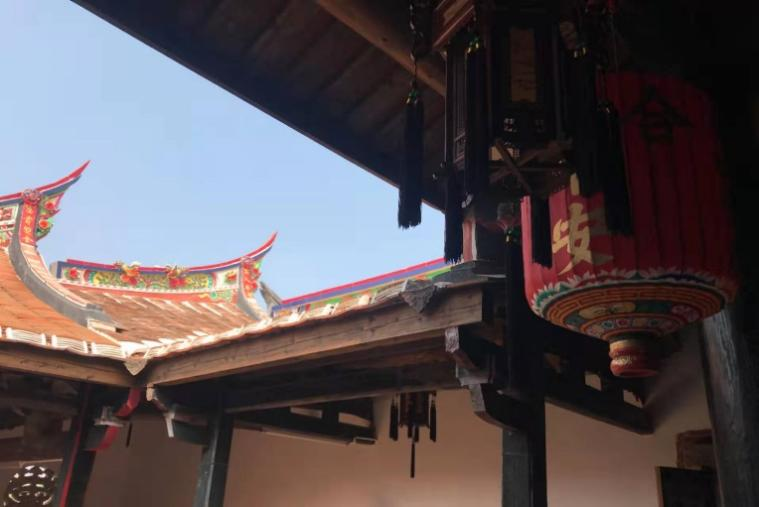
代表——老范志大厝
闽南古厝的典型代表老范志大厝位于泉州市南俊巷,其后有桂坛巷。(Old Fanzhi Dacuo (literally, "a grand residential complex call 'Old Fanzhi'"), a typical representative of Minnan Gucuo, is located in Nanjun Lane in Quanzhou City with Guitan Lane behind it.) 桂坛巷因有一座桂坛宫而得名;还有一个说法是该巷位于清源书院边,而在早期的科举时代,中举之人登科折桂,书院为举子云集之处,故以“桂坛”为名借喻举子登坛折桂之意。
老范志大厝厝主吴亦飞是乾隆年间晋江人,本为教书先生,后改业经营中成药神曲。吴亦飞取义范仲淹名言“不为贤相,当为良医”和“先忧后乐”为志而起店名曰“范志”。从开张始就生意兴隆,特别是在左宗棠征服回疆一役中,范志神曲最显功效,于是顾客盈门,后成为了富甲一方的商人,因而开始营建大厝。
整座大厝由三座五进三开间的大庭院组成,各院落之间以防火墙相隔,侧面墙设门,与各院落相连通。(The Dacuo consists of three smaller complexes, with each composed of five rows of houses and three rooms in each row. The complexes are separated by firewalls in between and connected by side walls.) 大庭院两侧均建有护厝两排,组成一栋规模宏大,且富有层次和建筑结构特色的大型宅院。(The Dacuo is also flanked by some side rooms, which, together with the other rooms, make up the grand multilayered complex.)
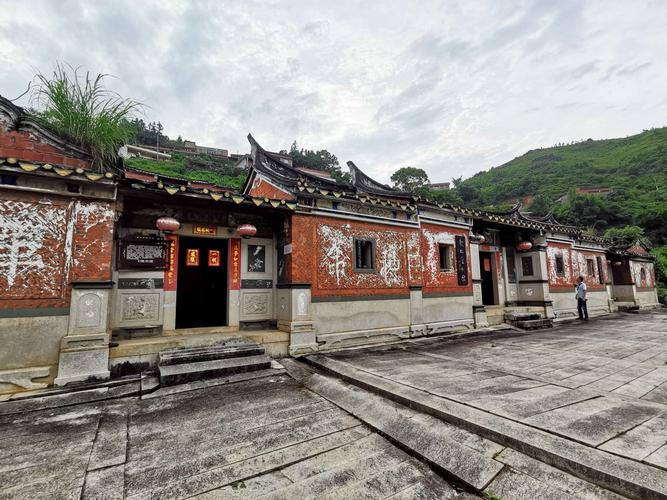
传承
时光冉冉,岁月如流,无数的人和物淡化在历史的长河里。幸运的是,今天我们还能目睹闽南红砖古厝这一国之瑰宝。如今,美丽的红砖古厝主要分布在我国东南沿海地区,主要包括福建省的泉州、厦门、漳州等地,在台湾省则以金门最为集中。(Today, the red-brick residences can be found mainly in the southeast coastal areas of China, including Quanzhou, Xiamen, Zhangzhou and other places in Fujian Province; In Taiwan Province, they are mainly found in Kinmen.)
红砖古厝鲜艳的红色,是闽南人生活的底色,歌咏着闽南人热烈开放的豪迈性格,和对生活永不衰竭的热情;古厝严谨精巧的结构布局,是闽南人智慧和远见的结晶,凝聚了闽南人关于家庭和睦、家业繁荣和家族传承的深远思考;古厝栩栩如生的瑞兽祥图、巧夺天工的雕梁画栋,寄托了闽南人对美好生活的淳朴期盼;古厝背后动人的历史故事,更体现了闽南人向海而生、爱拼敢闯的血性,诉说着闽南文化热爱家乡、胸怀天下的家国情怀。
目前,闽南红砖古厝已经被列入中国世界文化遗产预备名录。(Now the red-brick Minnan Gucuo has been included in the tentative list of UNESCO world heritage sites.) 红砖古厝所代表的“红砖文化”,汲取了中原文化、闽越文化和海洋文化的精华,是闽南地区建筑文化的重要代表。(The "red-brick culture", embodied in the Gucuo, shows the essence of Central Plains culture, Minyue culture and the marine culture, and has become an important representative of the architectural culture in southern Fujian province.) 古厝的一砖一瓦,一墙一角在青年一代手中代代传承,绵延不息。(This unique culture has been and will be passed on from generation to generation.)
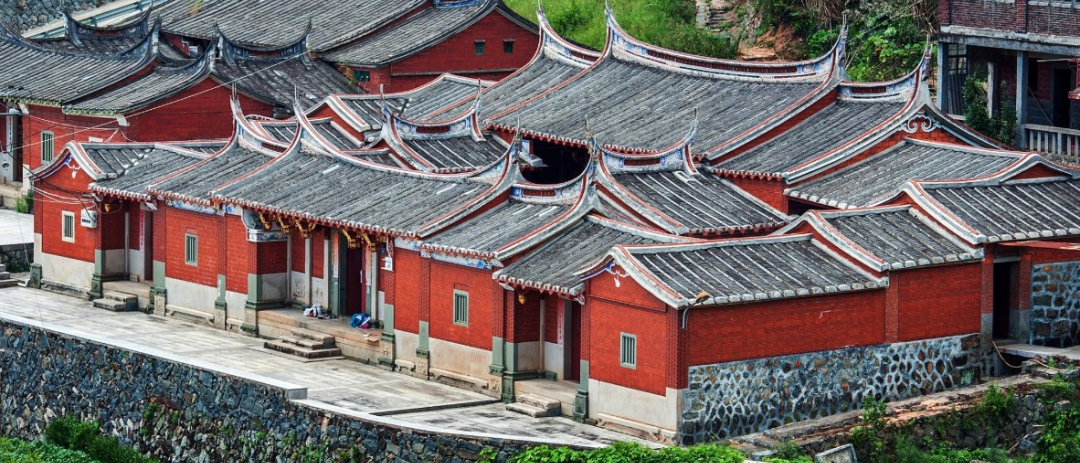
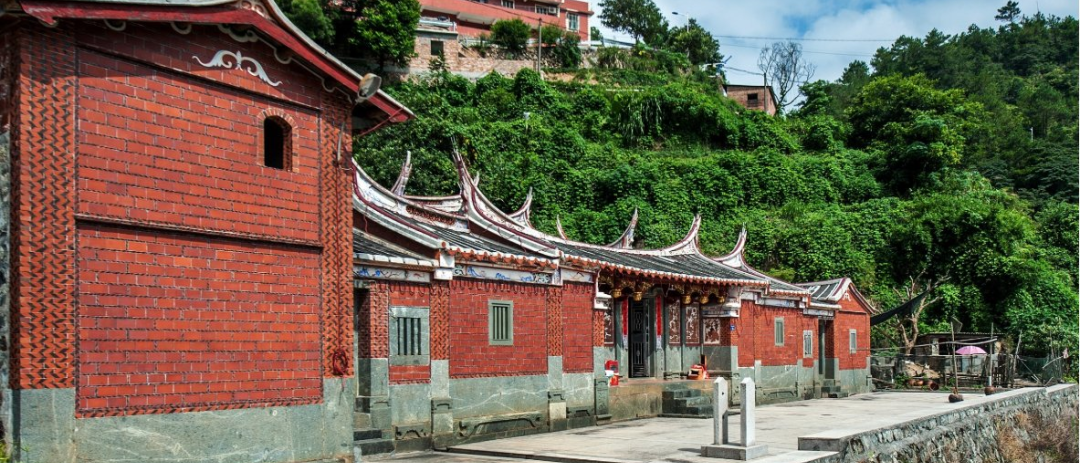
参考资料
[1] Xia , J., Chiou, S. (2015). Architectural Features and Preservation of Ancient Residential Complexes of the Changs in Xiangan, Xiamen. Int. Arch. Photogramm. Remote Sens. Spatial Inf. Sci., XL-5/W7, 453–460.
[2] 朱百顺. (2011). “品”闽南红砖古厝. 漳州职业技术学院学报(2), 78-82.
[3]
https://www.archdaily.com/803034/country-shop-in-huashu-village-zhou-ling-design-studio
[4] https://www.44whcfuzhou2021.cn/node/13420/20210120/6008189ec331f.shtml
[5]
https://blog.forumias.com/six-sites-added-to-the-tentative-list-of-unesco-world-heritage-sites/#What_is_the_tentative_list_of_UNESCO_world_heritage_sites
我要评论 (网友评论仅供其表达个人看法,并不表明本站同意其观点或证实其描述)
全部评论 ( 条)